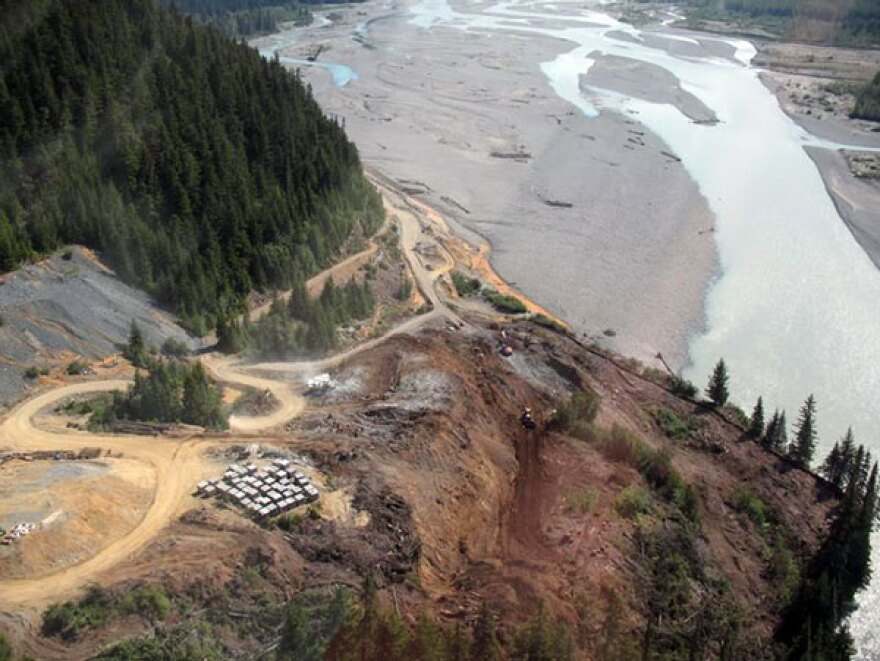Juneau Mayor Bruce Botelho is asking Canadian environmental officials to come up with a plan to treat Acid Rock Drainage from the Tulsequah Chief Mine at the headwaters of the Taku River.
Botelho has joined the growing sentiment on the Alaska side of the salmon-rich river that mine owner Chieftain Metals will not be able to remedy the 60-year-old problem.
“What is the long-term plan, recognizing that there may not be a mine in operation?” Mayor Bruce Botelho asked in a recent letterto Canadian Minister of Environment Peter Kent.
Since Chieftain Metals shut down its Water Treatment Plant in June, after six months of operation, folks downstream are looking for a permanent solution to the acidic discharge.
“Right now, we’re on the dirty end of this,” Chris Zimmer said.
Chris Zimmer is Alaska Campaign Director for the trans-boundary conservation group Rivers without Borders. His group echoes the sentiment of Botelho, Juneau legislators, the Taku River Tlingit First Nation, and others who want Canadian officials to look outside the mining industry for a solution.
When Chieftain pulled the plug on the treatment plant, Zimmer called for cross-border cooperation. Now the Canadian law firm Ecojustice has taken on the campaign, asking the B.C. attorney general to get involved.
“I got to believe that if the river flowed the other way and Canada was on the receiving end of the pollution and problems, that we’d see a much different situation here,” Zimmer said.
Chieftain put itself in violation of its federal and provincial environmental permits, when it stopped the water treatment, based on the cost of operating the plant.
At the time, the B.C. Ministry of the Environment required Chieftain to develop an action plan to get back into compliance.
That plan is now in place, according to B.C. Environmental Protection Regional Director Ian Sharpe.
In an email response to KTOO questions, Sharpe says one requirement is to remove sediment by redirecting runoff and mine site water through settling ponds. He said the clear water is then discharged into the Tulsequah River, which flows into the Taku.
Sharpe has required the company monitor the discharge weekly.
The company’s mitigation plan indicates sampling began on August 6. It says Chieftain Metals expects a new feasibility study by the end of the year. The company says that will attract full financing for the mine project, and allow it to resume treating the Acid Rock Drainage by the middle of next year.
A map of the Tulsequah and Taku Rivers watershed from Rivers Without Borders.
Zimmer says the action plan doesn’t ring true, if you look at the company’s current financials, which foretell a far different story.
“Their plan is basically, you know, just trust us,” Zimmer said.
Botelho says it’s time the British Columbia and Canadian national governments show they can enforce their own laws as well as international obligations.
“Part of this is wanting to receive that high level of assurance that there is a long term and not a limited situational response,” Botelho said. “Is there a permanent strategy in place to protect the watershed?”
Chieftain Metals purchased the property two years ago from bankrupt Redfern Resources, acquiring Redfern’ s permits and the condition that it clean up the Acid Rock Drainage. The Tulsequah Chief Mine has been discharging the acidic water since Cominco closed it in 1957.


